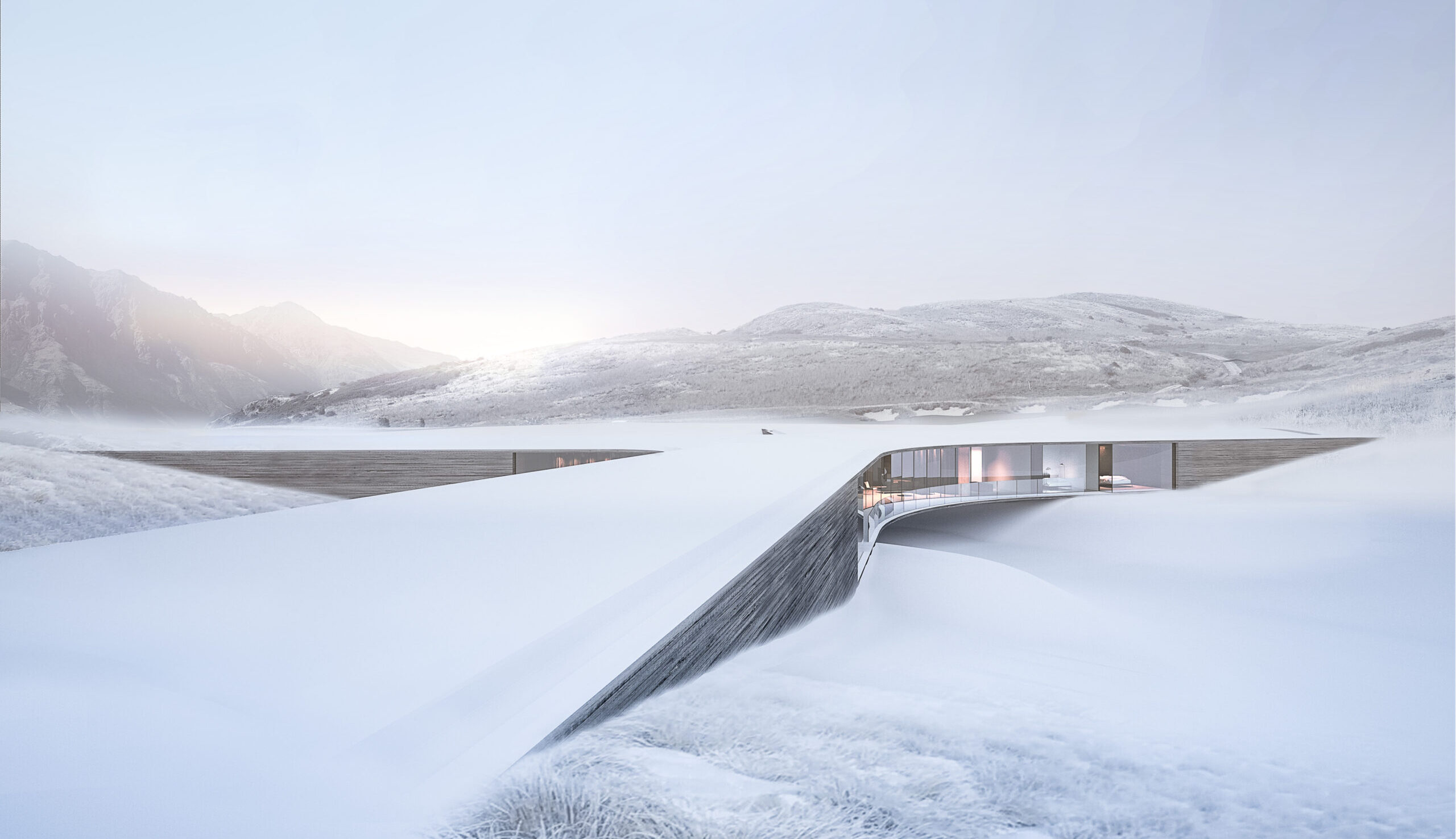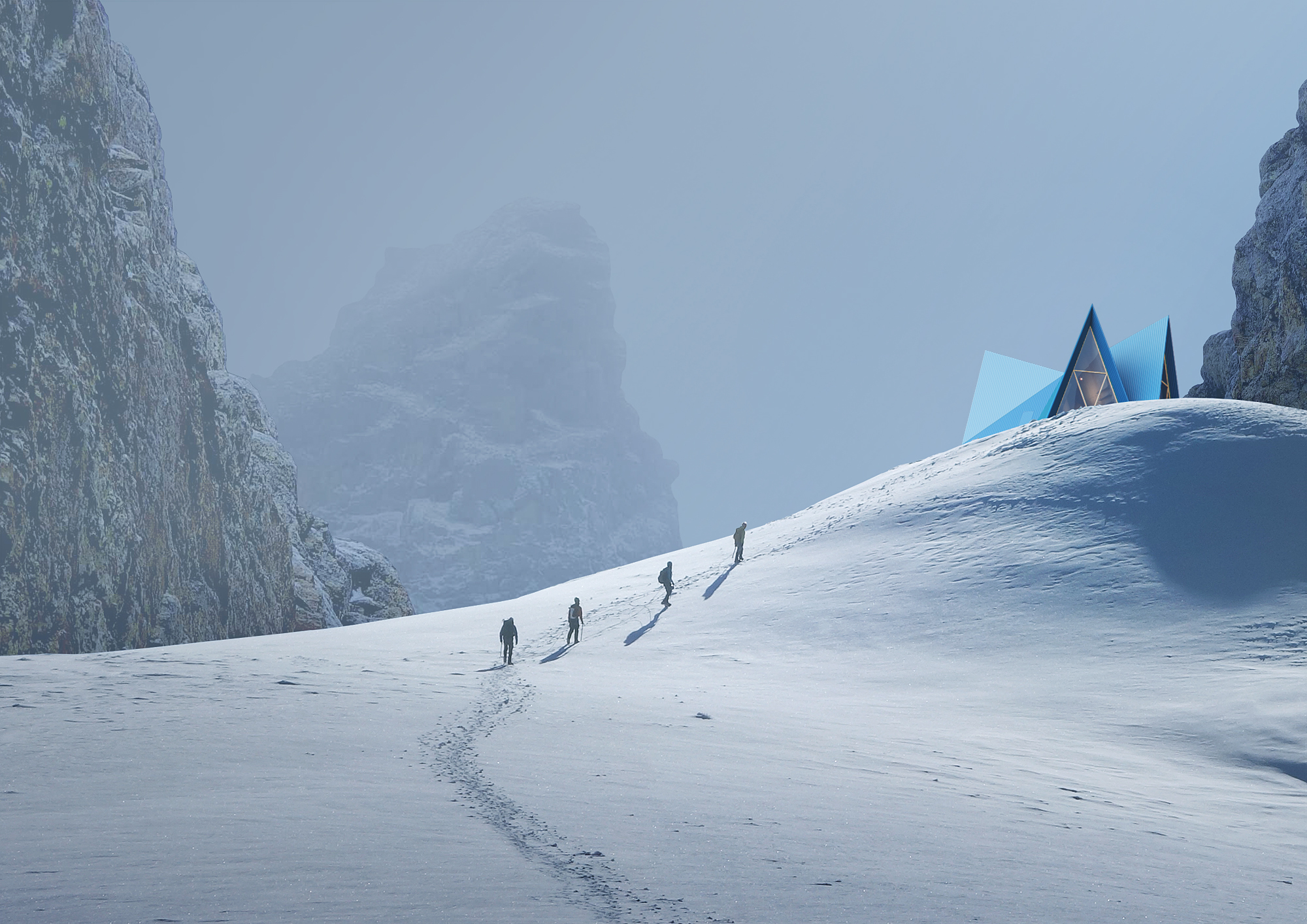Ema is a trained architect, writer and photographer who works as a Junior Architect at REX in NYC. Inspired by her global experiences, she shares captivating insights into the world’s most extraordinary cities and buildings and provides travel tips on her blog, The Travel Album.
Architecture, by its nature, is in constant conversation with the environment. While buildings are often designed with longevity and permanence in mind, they interact with changing seasons in profound ways. Winter, with its snow, ice and frozen landscapes, temporarily alters not only the physical appearance of structures but also how we experience them. Snow-covered façades and ice-dappled surfaces add new dimensions to architecture, highlighting elements that may otherwise go unnoticed and creating ephemeral beauty that transforms landmarks.
With the winter season quickly approaching, I want to explore and highlight how seasonal elements like snow and ice reshape the perception and experience of iconic architectural works, from urban landmarks to remote structures. Perhaps the next time you’re walking through snow and ice, you might find yourself noticing something new about the architecture around you — details that might have gone unnoticed in any other season.
Snow as a Visual Cloak: Shifting Perception of Forms


Yabuli Entrepreneurs’ Congress Center by MAD Architects, Shangzhi, Harbin, China
We’ve all had those winter moments when, looking into the distance, we catch only the faint outline of a building, softened by a blanket of snow. Snow transforms the appearance of architectural structures, softening edges, blurring lines and muting colors. Façades that appear sharp and rigid throughout the year take on new qualities as snow settles into grooves, ledges and roofs. This shift creates an ephemeral beauty that emphasizes forms and textures that might otherwise go unnoticed. In architectural terms, snow functions as an overlay — a temporary material that interacts with existing forms, revealing how buildings respond to their environment. Architectural lines become more fluid and patterns of accumulation highlight surfaces in new ways. This visual shift draws attention to subtleties like eaves, ledges and cornices, which might seem less significant during other seasons.
Additionally, winter’s muted color palette — dominated by whites, grays and soft blues — heightens our awareness of form and structure. Buildings set against a snowy backdrop appear isolated and sculptural, allowing their forms to stand in stark relief. The minimalism of a snow-covered landscape amplifies architecture’s presence, making even the most familiar buildings feel new and distinct.
Reflections in Frozen Landscapes and the Role of Light

Norwegian National Opera and Ballet by Snøhetta, Oslo, Norway
Winter introduces unique lighting conditions that change how we perceive architectural landmarks. The low angle of the sun in winter casts long shadows and creates dramatic contrasts, enhancing textures and surfaces. Snow and ice further amplify this effect by reflecting natural light, creating a glow that brightens even the darkest days. Snow also introduces a reflective element to the landscape, mirroring architectural forms on frozen surfaces like lakes, ponds and plazas. These reflections create a sense of symmetry and depth, enhancing the spatial experience of buildings. The interplay between light, shadow and reflection transforms architecture into something more dynamic, shifting throughout the day and season.
One of my favorite examples of an iconic landmark that both captivates and shifts perception (in all seasons, especially the winter season) is the Norwegian National Opera and Ballet. The building itself evokes the image of an iceberg, with its base seamlessly blending into the adjacent water. When the water freezes, it appears as if the structure extends directly into the ice. The opera house’s white façade, when covered in snow, softens its sharp geometric edges, creating a striking contrast that makes the expansive blue glass surfaces stand out even more vividly against the surrounding whiteness. Interior spaces also benefit from these seasonal lighting effects. Large windows or glass façades allow diffused winter light to enter, creating soft, ambient lighting that enhances the atmosphere within. This interaction between light and architecture adds warmth to spaces, inviting people to linger indoors and engage with their surroundings.
Architectural Challenges: Snow Loads and Structural Stress

X HOUSE by Monk Mackenzie, Queenstown, New Zealand
While snow and ice introduce aesthetic transformations, they also impose significant structural challenges. Architects and engineers must carefully consider snow loads and the impact of freezing temperatures on materials during the design process. Heavy snowfall can accumulate on roofs, creating stress that requires specific engineering solutions to ensure safety and stability.
Buildings in regions prone to harsh winters are designed to shed snow efficiently through sloped roofs, drainage systems and heat-tracing cables. Flat roofs, common in urban environments, must be reinforced to handle the added weight of snow. Snow loads can also affect façades, requiring durable materials that withstand the freeze-thaw cycle to prevent cracking or deterioration. This aspect of architectural design highlights the importance of adaptability. Successful winter architecture balances aesthetics with function, ensuring that buildings remain both visually appealing and structurally sound during seasonal changes.
Sensory Experience: How Winter Changes the Way We Engage With Space


Fleinvær Refugium Gildeskål Municipality by Rintala Eggertsson Architects, Nordland, Norway
Winter doesn’t just transform architecture visually; it also alters how we experience and interact with spaces. Snow muffles sound, creating a sense of quiet and calm that changes the ambiance of public spaces and plazas. The absence of bustling noise can make even the busiest urban areas feel more serene, allowing people to experience architecture in a more reflective and intimate way. The tactile qualities of winter — like the crunch of snow underfoot or the cold touch of metal surfaces — also influence how we move through spaces. People tend to slow down, tread carefully and seek out warm, sheltered areas. This shift in movement encourages a different kind of engagement with architecture, as we become more aware of our surroundings and how we interact with them.
Winter architecture often carries a deeper emotional significance, providing spaces of refuge and warmth during cold and dark months. Well-designed winter architecture fosters a sense of coziness and connection, encouraging people to gather indoors and engage with their environments more intentionally. The sense of warmth plays a crucial role in this experience. Fireplaces, radiant heating and warm materials such as wood and textiles become central features of winter spaces, transforming interiors into sanctuaries from the cold. This interplay between indoor and outdoor environments enhances the sensory experience of architecture, encouraging people to explore how design responds to seasonal needs. Winter architecture becomes a tool for creating spaces that nurture the soul, offering both physical warmth and psychological comfort.
The Ephemeral Beauty of Temporary Structures
In the winter, architecture takes on an ephemeral quality, embracing the fleeting nature of the season. Temporary structures like ice hotels, snow pavilions and seasonal markets highlight the impermanence of winter architecture. These spaces are designed to exist only for a short period, relying on snow and ice as primary materials, which naturally dissolve with the changing seasons. These temporary structures challenge conventional ideas of architecture as a permanent fixture. They invite us to experience space in new ways, emphasizing the relationship between design, nature and time. The very act of constructing and dismantling these spaces mirrors the rhythm of the seasons, offering a unique perspective on how architecture can respond to environmental cycles.
The Seasonal Dance Between Snow and Structure
Winter transforms architecture in ways that go beyond aesthetics, reshaping how we perceive, experience and engage with the built environment. Snow and ice alter the visual character of structures, creating new opportunities for reflection and discovery. Seasonal lighting and sensory changes influence how we move through and interact with spaces, inviting us to explore architecture in a more deliberate and thoughtful way. While winter introduces challenges such as snow loads and material stress, it also inspires innovation and adaptability in architectural design. Temporary structures made of snow and ice celebrate the impermanence of the season, reminding us that architecture, like nature, is in constant flux.
Ultimately, the interaction between snow and structure offers a profound lesson: architecture is not static but dynamic, shaped by the rhythms of the environment. As we experience the fleeting beauty of winter, we are reminded of the importance of creating spaces that respond to seasonal change — places that not only shelter us but also inspire us throughout the year.
Architects: Want to have your project featured? Showcase your work by uploading projects to Architizer and sign up for our inspirational newsletters.

 Fleinvær Refugium
Fleinvær Refugium  Norwegian National Opera and Ballet
Norwegian National Opera and Ballet  Skýli
Skýli  X House
X House 


